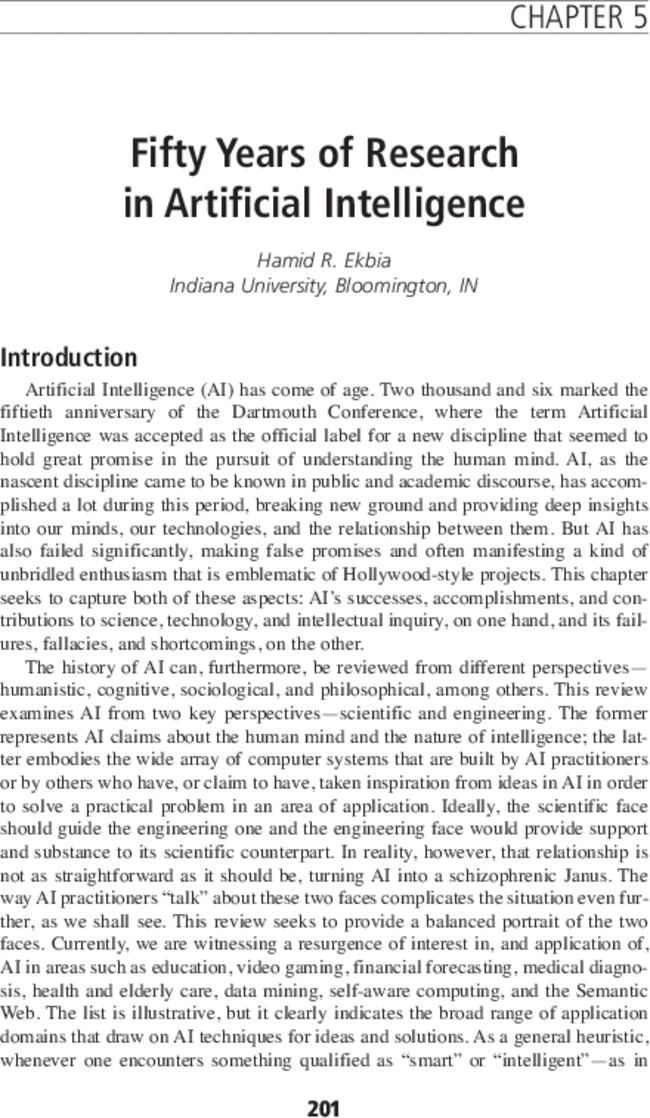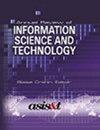Fifty years of research in artificial intelligence
Annual Review of Information Science and Technology
Pub Date : 2012-01-18
DOI:10.1002/aris.2010.1440440112
引用次数: 17
Abstract
Artificial Intelligence (AI) has come of age. Two thousand and six marked the fiftieth anniversary of the Dartmouth Conference, where the term Artificial Intelligence was accepted as the official label for a new discipline that seemed to hold great promise in the pursuit of understanding the human mind. AI, as the nascent discipline came to be known in public and academic discourse, has accomplished a lot during this period, breaking new ground and providing deep insights into our minds, our technologies, and the relationship between them. But AI has also failed significantly, making false promises and often manifesting a kind of unbridled enthusiasm that is emblematic of Hollywood-style projects. This chapter seeks to capture both of these aspects: AI’s successes, accomplishments, and contributions to science, technology, and intellectual inquiry, on one hand, and its failures, fallacies, and shortcomings, on the other. The history of AI can, furthermore, be reviewed from different perspectives— humanistic, cognitive, sociological, and philosophical, among others. This review examines AI from two key perspectives—scientific and engineering. The former represents AI claims about the human mind and the nature of intelligence; the latter embodies the wide array of computer systems that are built by AI practitioners or by others who have, or claim to have, taken inspiration from ideas in AI in order to solve a practical problem in an area of application. Ideally, the scientific face should guide the engineering one and the engineering face would provide support and substance to its scientific counterpart. In reality, however, that relationship is not as straightforward as it should be, turning AI into a schizophrenic Janus. The way AI practitioners “talk” about these two faces complicates the situation even further, as we shall see. This review seeks to provide a balanced portrait of the two faces. Currently, we are witnessing a resurgence of interest in, and application of, AI in areas such as education, video gaming, financial forecasting, medical diagnosis, health and elderly care, data mining, self-aware computing, and the Semantic Web. The list is illustrative, but it clearly indicates the broad range of application domains that draw on AI techniques for ideas and solutions. As a general heuristic, whenever one encounters something qualified as “smart” or “intelligent”—as in CHAPTER 5

50年的人工智能研究
本文章由计算机程序翻译,如有差异,请以英文原文为准。
求助全文
约1分钟内获得全文
求助全文

 求助内容:
求助内容: 应助结果提醒方式:
应助结果提醒方式:


